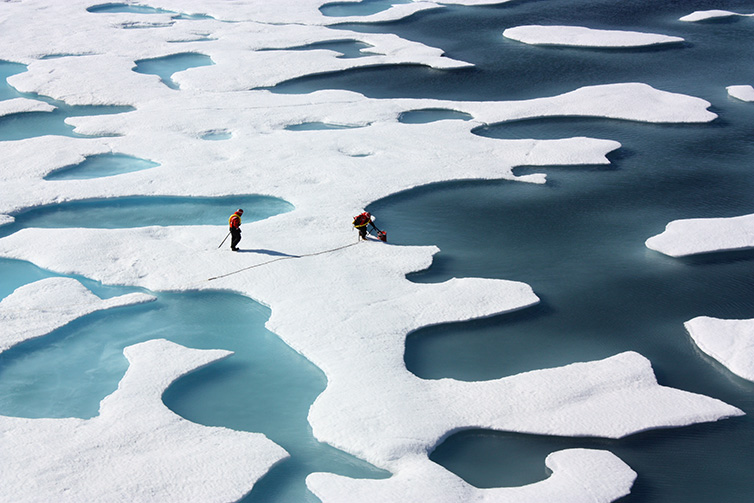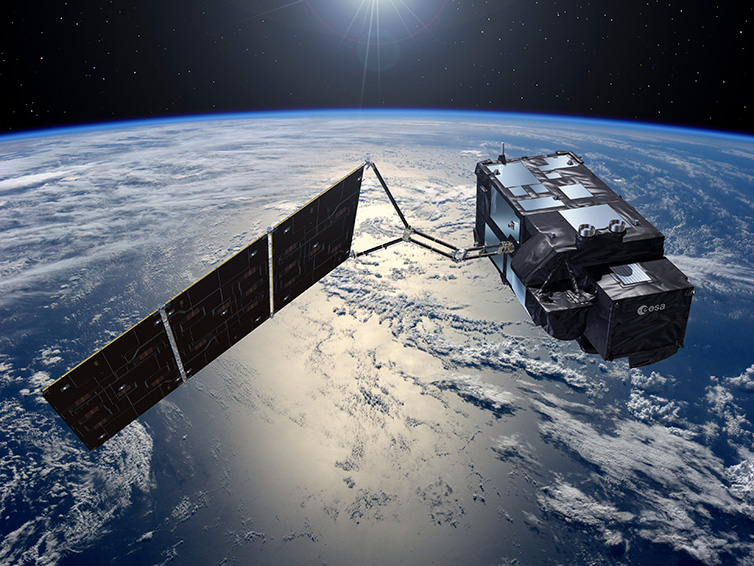

Melt ponds on sea ice pose major observational and modelling challenges. (Photo: NASA/Kathryn Hansen, CC BY 2.0)
A workshop on observations and data assimilation of sea-surface temperatures and sea ice for numerical weather prediction (NWP) will take place at ECMWF from 22 to 25 January 2018. Registration is still open until 15 October.
Accurate knowledge of sea-surface temperatures (SST) and sea ice coverage is vital for weather forecasts ranging from a few days to several months ahead. That is why there is a pressing need for progress in the availability of observations and the use made of them.
"The objective of the workshop is to put on the table what we know about SST and sea ice products and assimilation,” says Patricia de Rosnay, one of the workshop organisers.
She adds that this includes current and future in-situ and satellite observations, retrieval algorithms, and the assimilation of SST and sea ice observations into forecasting systems.
“The goal is to identify ways to improve SST and sea ice data assimilation in coupled Earth system models for NWP and climate reanalysis.”

Sentinel-3 satellites carry an instrument which can determine global sea-surface temperatures to high accuracy. Sentinel-3A was launched in February 2016. It will be joined by Sentinel-3B next year. The Sentinel-3 mission is part of the EU’s Copernicus Earth observation programme and is managed jointly by ESA and EUMETSAT. (Image: ESA–Pierre Carril)
Earth system approach
The workshop comes as weather and climate modellers strive to include an increasing number of relevant Earth system components in their models.
Sea ice is one of them. It covers the ocean surface during winter in some mid-latitude regions and year-round in parts of the Arctic and Antarctic.
“Sea ice not only has a profound impact on marine activities but also influences weather and climate on a hemispheric scale,” says workshop co-organiser Steffen Tietsche. “We need to improve our ability to observe and model sea ice in order to pursue our mission of ever better forecasts from days to seasons."
The drive towards Earth system modelling is reflected in ECMWF’s ten-year Strategy to 2025.
The Strategy calls for more coupling in data assimilation and the forecasting model since this could help to extract predictable signals from the initial conditions.
“The workshop will be an opportunity to discuss with experts from other centres how best to proceed in this area,” says Patricia.
For more details on the workshop and information on how to register, please visit the workshop web page.
